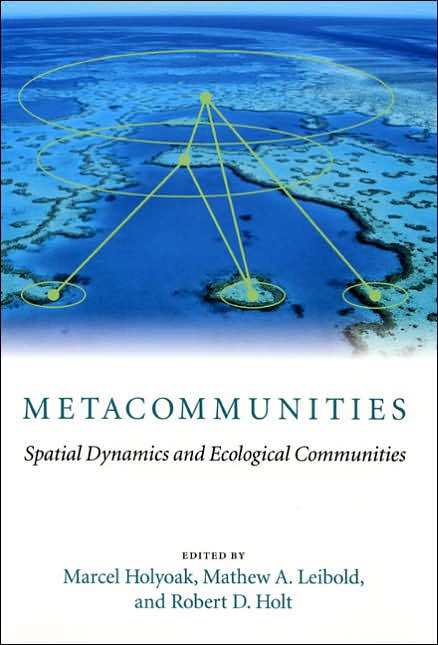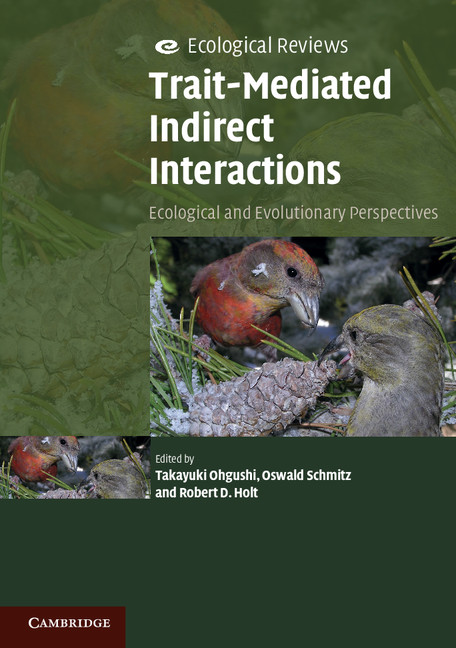What makes the study of life such an endlessly satisfying endeavor is that species and ecosystems reflect both order and change – both the predictable outcome of general laws, and the lingering effects of idiosyncrasies of evolution and earth history. Moreover, the natural world does not parse along the suture lines of our disciplinary specializations. Dealing with the complexity of natural ecosystems is a highly challenging problem, and a diversity of perspectives is needed to address this complexity. My core personal research focuses on theoretical and conceptual issues at the population and community levels of ecological organization, and on the task of linking ecology with evolutionary biology. Though primarily a theoretician, I am keenly interested in natural history and have throughout my career maintained an empirical dimension to my research, often in collaboration with a wide range of natural and social scientists.
One approach I have championed to go beyond traditional analyses of single species or interacting species pairs, without wading into the morass of entire food webs, is to focus on an intermediate level of complexity – “community modules” – small sets of interacting species, patterns of interactions found across many ecosystems. These include topics such as apparent competition, intraguild predation, and the interface of disease ecology and community ecology. As one example of the latter, with colleagues at Johns Hopkins on a NSF grant, I am exploring how predators influence infectious disease dynamics in host populations that are also prey. Predators can alter disease transmission by shifting host behavior, or by increasing host mortality, leading to emergent effects such as recurrent epidemics. We are examining these issues empirically and theoretically.
Many ecological patterns can only be understood by articulating the interplay of processes across multiple scales – i) up and down the organizational hierarchy of ecological systems, ii) across space, and iii) through time.
i) One theme in my work is to link individual traits, such as foraging and movement behaviors, with population and community models. For instance, as part of an inter-disciplinary team working on an ongoing NSF “Biocomplexity” project in the renowned Serengeti ecosystem of east Africa, we have developed models for the interlinked dynamics of key dominant species (e.g., wildebeest). Adaptive movement behavior by these herbivores turns out to be a crucial driver of vegetation dynamics, landscape structure, and ecosystem stability.
ii) Many community modules crucially involve movement in space; analyzing the influence of such spatial linkages is a significant theme in my research. For instance, a recent paper from my lab in Nature revealed strong indirect linkages between ponds and surrounding vegetation, via dragonflies (which have aquatic immatures, but as adults consume terrestrial pollinating insects); the presence or absence of fish (which consume dragonfly larvae) indirectly influences terrestrial plant reproduction. I recently coedited and wrote much of a book (with Marcel Holyoak and Mathew Leibold, published by University of Chicago Press) titled Metacommunities: Spatial Dynamics and Ecological Communities, which explores many aspects of spatial linkages in ecological systems. Finally, at Kansas I developed a large-scale, long-term and still-running field experiment on how habitat fragmentation influences secondary succession, along with related theory. This experiment was initiated in 1983, and has revealed emergent effects of patch size and landscape position upon the rate of succession from herbaceous vegetation to woody plants, and also upon many consumer groups and even ecosystem processes.
iii) Evolutionary processes can be a significant driver of ecological patterns and processes. Another broad approach I take to ecological complexity is to focus on the interplay of ecology and evolution. I am for instance addressing why some species are conservative in their ecological niches, whereas others evolve rapidly. Some species respond to environmental change by adaptive evolution, whereas others simply shift in their ranges or go extinct. My ongoing theoretical work helps illuminate how demographic response of species to environmental variation can lead to these disparate responses, and helps to explain the puzzling phenomenon of niche conservatism. This issue bears on many applied issues, such as control of invasive species, conservation, and the emergence of infectious diseases.


